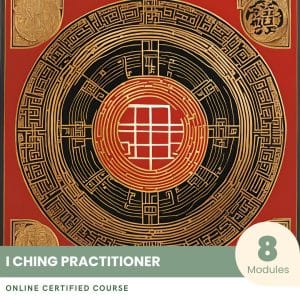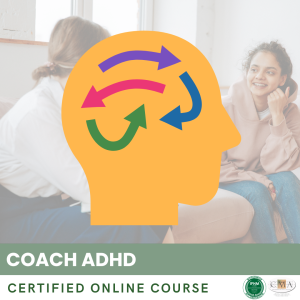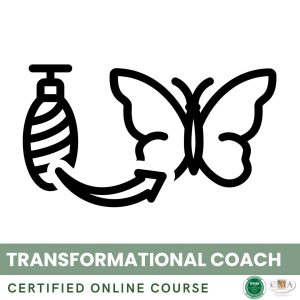After exploring limiting beliefs and their impact on our emotional well-being and personal growth, it is essential to focus on the central role of emotions in the healing process. Emotions are valuable messengers that inform us about our needs, values, and deep aspirations. As a Spiritual Healing Coach, it is crucial to know how to welcome, understand, and work with our clients’ emotions in order to guide them towards greater internal harmony and a better quality of life.
Emotions are complex psychophysiological responses that involve changes in our physiology, thoughts, behaviors, and subjective sensations. They are triggered by internal or external stimuli, which are evaluated as relevant to our survival or well-being. For example, fear is an emotion that alerts us to potential danger and prepares us to flee or fight, while joy is an emotion that signals that our needs are met and motivates us to reproduce associated behaviors.
There are different classifications of emotions, but we typically identify six basic emotions: joy, sadness, fear, anger, disgust, and surprise. Each of these emotions has a specific adaptive function and is accompanied by distinct physiological changes, such as increased heart rate for fear or tear secretion for sadness. These basic emotions can combine to form more complex emotions like guilt, shame, pride, or gratitude.
However, in our Western society, we have often learned to suppress, ignore, or judge our emotions, viewing them as weaknesses or obstacles to our efficiency. This emotional disconnection can have detrimental consequences for our physical and mental health, creating internal tensions, somatizations, and relationship difficulties. As we have seen in previous sub-modules, unresolved emotional wounds and resulting limiting beliefs are often at the origin of this disconnection from our emotional world.
As a Spiritual Healing Coach, our role is to assist our clients in reconnecting to their emotions, accepting them with kindness, and using them as internal compasses. The first step involves creating a safe, non-judgmental space where emotions can be expressed and explored with confidence. This involves providing empathic presence and active listening, allowing the person to feel seen, heard, and validated in their emotional experience.
Techniques such as Focusing by Eugene Gendlin or Emotion-Focused Therapy by Leslie Greenberg can be particularly useful in helping our clients develop a finer emotional awareness. This involves learning to identify the physical sensations, thoughts, and images associated with each emotion to better understand their message and function. For example, a tightening sensation in the chest associated with sadness can indicate a need for comfort and support, while a sensation of warmth in the abdomen associated with anger can signal a personal boundary that has been crossed.
Once emotions are identified and welcomed, it’s about learning to regulate them healthily and constructively. Techniques such as conscious breathing, progressive relaxation or meditation can help to calm emotional intensity and regain an internal state of balance. It’s also important to encourage our clients to express their emotions appropriately, finding creative and harmless ways to externalize them, such as writing, drawing, dancing or singing.
Alongside this acceptance and emotional regulation work, energetic approaches like Reiki, Healing Touch, or Crystal Therapy can provide significant help in releasing emotional blocks and rebalancing energy fields. By working on the chakras and meridians associated with each emotion, these techniques promote the harmonious flow of life energy and greater emotional fluidity.
It’s important to bear in mind that emotional healing is a gradual and non-linear process, requiring patience, gentleness, and perseverance. It’s a true re-learning of our relationship with our emotions, involving undoing deeply ingrained habits and creating new acceptance and expression reflexes. This process can bring about resistance and fears, and it is essential to welcome them with kindness and work them through in parallel.
As Spiritual Healing Coaches, our role is to provide a safe and supportive space where our clients can explore their emotions and experiment with new ways to live and express them. By accompanying them with compassion and providing them with concrete tools to develop their emotional intelligence, we assist them in gradually freeing themselves from restrictive emotional patterns and reconnecting with their inner wisdom.
This emotional reconnection paves the way for a more fulfilling life, aligned with the soul’s deep needs. It enables developing greater resilience to life’s challenges, the ability to create authentic and nourishing relationships, and a sense of inner unity. By fully welcoming our emotions, we can finally reconcile all parts of ourselves and radiate our unique light into the world.
Takeaways:
– Emotions are valuable messengers that inform on our needs, values, and deep aspirations. As a Spiritual Healing Coach, it’s crucial to know how to welcome, understand, and work with clients’ emotions.
– Emotional disconnection, often due to repression or judgment of emotions, can have detrimental effects on physical and mental health. Unresolved emotional wounds and resulting limiting beliefs often lie at the origin of this disconnection with the emotional world.
– The Spiritual Healing Coach’s role is to assist clients in reconnecting to their emotions, by creating a safe, non-judgmental space, providing empathic presence, and active listening. Techniques like Focusing or Emotion-Focused Therapy can be useful to develop a finer emotional awareness.
– Once emotions are identified and welcomed, it’s about learning to regulate them in a healthy, constructive way, thanks to techniques like conscious breathing, progressive relaxation, or meditation. Appropriate expression of emotions is also encouraged.
– Energetic approaches like Reiki, Healing Touch, or Crystal Therapy can assist in releasing emotional blocks and rebalancing energy fields.
– Emotional healing is a gradual, non-linear process, requiring patience, gentleness, and perseverance. It involves a relearning of the relationship with emotions, needing to undo ingrained habits and create new acceptance and expression reflexes.
– Emotional reconnection paves the way for a more fulfilling life, aligned with the soul’s deep needs, enabling development of resilience, authentic relationships, and a sense of inner unity.
👉 To download docx (Editable) file click here : Click here
👉 To download PDF file click here : Click here
👉 To download MP3 file click here : Click here








